Without a pile of documents, the pipes won't start heating: how to install central heating in a private house?
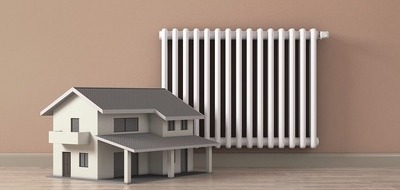
When building a private house, you are faced with a choice the most economical space heating systems.
Many owners prefer central heating, in which thermal energy is directed to the consumer from an independent boiler house.
Content
Features of central heating in a private house
Agreement on the possibility of providing thermal energy, concluded between the supplier represented by the main boiler house and the owner of a private house (consumer), is a sufficient basis for connection to the central heating network. There is three types of schemes to connect the consumer to the main boiler room:
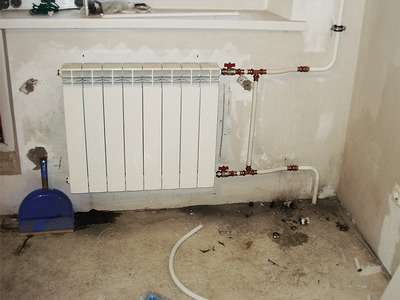
- Independent connection in which the boiler is used heat exchanger. A similar scheme is used in cases where it is necessary to prevent an increase in pressure in the heating system provided for by the building design.
- Dependent direct flow connection.
- Combined The scheme provides for the supply of mixed water through a special elevator.
Regardless of the type chosen, work cannot be started without completing the accompanying documentationThe permit is issued by certain government bodies.
Procedure for completing documentation for connecting to the system
The use of central heating in a private home requires prior approval by certain authoritiesThe registration process consists of the following stages:
- relevant local government bodies make a decision on the admissibility of installing a central heating system at a specific address;
- supplier is obliged to provide, upon request of the consumer, description of conditions connections;
- design technical documentation consists of developing a heating project with subsequent approval;
- completes the process conclusion of a contract for the supply of thermal energy.
Installation of a central heating system in a private home without accompanying documentation is strictly prohibited. Domestic legislation provides for punishment for violators.
Permission from municipal authorities
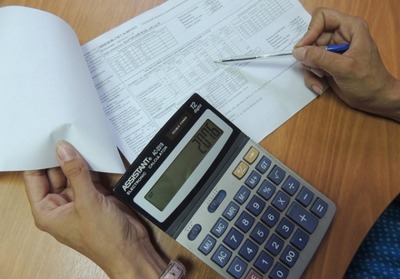
The application submitted by the owner of a private house is subject to consideration at the next meeting. local executive or administrative bodies.
A positive decision is based on correctly executed technical documentation corresponding to the submitted project. The result is reflected in extract from the minutes of the meeting.
Provision of technical conditions by the heat supply organization
The consumer represented by the owner of a private house has the right to contact the energy supplier with a request. Representatives of the heat supply organization are required to review the application and provide the required information.
For definition and issuance technical conditions for connecting a private house to the central heating network are allocated to the supplier 14 working days. Upon expiration of the specified period, the operating organization either provides the requested documentation or justifies the reason for the refusal.
Actions for project development and approval
A specific list of documents is provided for approval by the heat supply organization. A properly composed package contains:
- proposals for technical reconstruction previous heat supply scheme with detailed calculations;
- Description of the thermal insulation method fencing devices separating the interior space of a private house from external structures;
- specifying values calculated thermal loads.
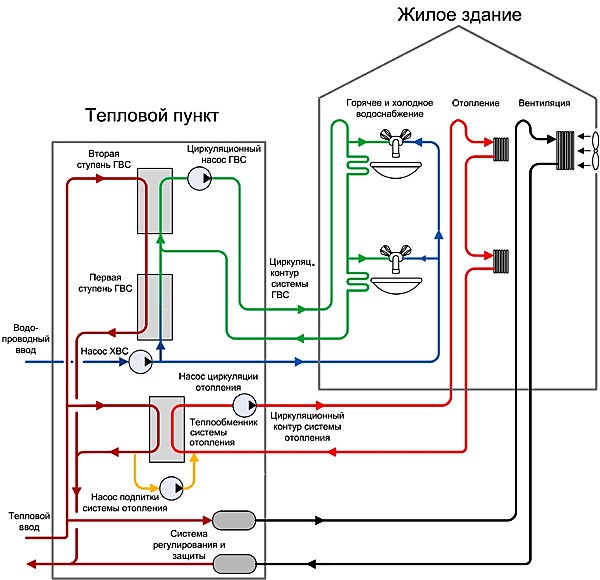
Photo 1. Diagram showing the movement of the coolant in central heating from the heating point to the residential building.
To review the provided package of design documentation in the operating organization a special commission is being formedIn the absence of compelling reasons for refusal, agreement is reached.
How to carry out installation and execution of the contract
The final stage of the process of connecting a private house to the central heating system is implementation of design work. Upon completion of installation activities for the installation of heating with the heat supply company an agreement is concludedSuch an agreement specifies the terms of provision of services by the operating organization. Accompanying documentation, attached to the contract, contains detailed information about the heating system with a detailed description of all functional elements and their location.
Important! When installing heating equipment, certain requirements must be met security measures. In particular, it is necessary to ensure free access to individual elements of the heating system. This will facilitate the replacement or repair of failed parts of the heating equipment.
Features of an individual heating point
Dependent scheme central heating requires the presence of specific transition device. Thermal energy is transferred by means of an elevator unit, which is part of the individual heating point structure. In the central network, water is heated up to 150°C, whereas in an internal heating system the temperature indicator is limited to a maximum value 90°СThe absence of boiling is explained by the increased atmospheric pressure in the pipes.
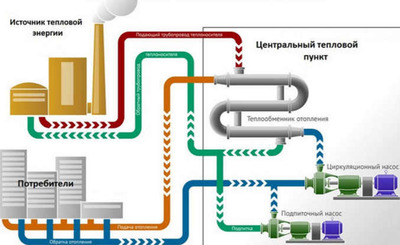
Thermal energy from the central network is transmitted to the consumer with the help of elevator, designed to heat the coolant. Mixing the water of the internal system with the superheated liquid of the main source helps to increase the temperature.
The elevator design is represented by a steel body. Inside is located mixing chamber, which has a nozzle made in the form of a narrowing hole. Such a device allows increasing the speed of the coolant in the heating system.
Useful video
The video explains why an elevator is needed in central heating and what it looks like.
Central Heating: Pros and Cons
The feasibility of choosing this heating method determined by the proximity of the network heating mainOwners who prefer this type of system take into account advantages centralized supply of heat to the premises, expressed by the following factors:
- opportunity zonal distribution thermal energy;
- high heating rate premises;
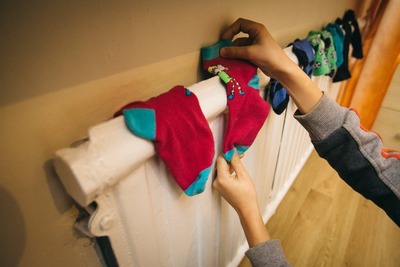
- noiselessness;
- availability of service and repair equipment.
When choosing a heating system for a private home, you should pay attention to flaws centralized scheme:
- possibility of leakage coolant;
- space for installing radiators reduces the usable area of the room;
- low air temperatures can cause freezing of the coolant in the pipeline;
- heat is distributed unevenly, depending on the proximity of the radiators.
The main disadvantage of the system under consideration is its dependence on the central networkA certain heating schedule does not allow the owner of a private house to heat the premises when necessary.







